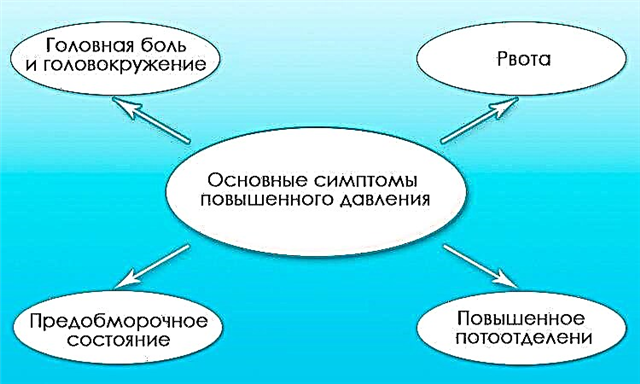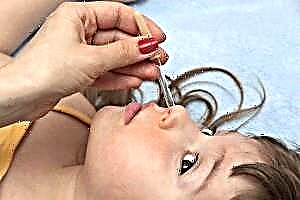The appearance of loose tonsils is due to an increase in lymphoid tissue as a response to the inflammatory process. The proliferation of lymphoid structures occurs to ensure the body's defense against the spread of infectious pathogens along the bloodstream. Loose tonsils in most cases indicate the presence of an acute or prolonged infectious and inflammatory process, for example, with chronic pharyngitis, tonsillitis or frequent ARVI.
 Why are the tonsils loose? Tonsils are a barrier when trying to penetrate infectious microorganisms and environmental irritants (dust particles, occupational hazards) into the body.
Why are the tonsils loose? Tonsils are a barrier when trying to penetrate infectious microorganisms and environmental irritants (dust particles, occupational hazards) into the body.
Lymphoid tissue consists of follicles that undergo hyperplasia during the development of the inflammatory process.
Healthy tonsil tissue is smooth and pink in color. Inflammation leads to the appearance of tuberosity of the mucous membrane and loosening of the tissue.
ARVI
ARVI with a frequency of 1-2 times a year does not cause loosening of the lymphoid tissue, however, with frequent attacks of infectious microorganisms, the tonsils enlarge and become less dense. Especially often, friability is observed with concomitant pharyngitis or sore throat.
The most common viruses include parainfluenza virus, rhino- and adenoviruses. The risk of infection from a sick person is noted in the first week of the presence of symptoms. The infection is transmitted by air.
Clinical symptoms depend on the type of virus infecting.
| Virus | Clinical signs |
|---|---|
| Adenovirus infection | Acute onset, febrile hyperthermia, rhinorrhea, nasal congestion, wet cough. Regional lymph nodes enlarge and become sensitive to palpation. Signs of bronchitis, laryngitis and conjunctivitis are gradually added. Children may have diarrhea and abdominal pain. With pharyngoscopy, the tonsils are visualized as edematous, hyperemic, in places with fibrin plaque. |
| MS infection | Cough, runny nose, soreness when swallowing, subfebrile hyperthermia. In children, cough manifests itself in the form of seizures, followed by the release of viscous sputum. With the defeat of the small bronchi, respiratory failure develops. |
| Rhinovirus infection | Profuse rhinorrhea, slight dry cough, lacrimation, sore throat. |
Loose tonsils are found with frequent attacks of a viral infection. Even in the absence of throat symptoms, lymphoid tissue still undergoes changes.
changes.
Among the complications of ARVI, it is worth highlighting:
- pneumonia;
- bronchiolitis;
- otitis;
- sinusitis;
- meningitis;
- neuritis;
- false croup;
- myocarditis;
- sepsis.
Loose glands can become a source of infection with inadequate treatment of an acute illness.
Complications are caused by the progression of a viral disease or the addition of a secondary bacterial infection.
Diagnostics involves the analysis of anamnestic information, a physical examination, as well as laboratory tests (RIF, PCR). Additionally, otorhinolaryngoscopy, pharyngoscopy and radiography are prescribed. With the development of complications, consultation of a pulmonologist, neurologist and infectious disease specialist is required.
Usually ARVI treatment is carried out at home. It includes:
- bed rest (with high hyperthermia);
- plentiful warm drink;
- vitamin food rich in proteins;
- antiviral drugs (Remantadin, Amiksin);
- antipyretic drugs (Nimesil);
- expectorants, mucolytics (ACC, Ambroxol);
- antihistamines (Loratadine);
- vasoconstrictor drugs in the form of nasal drops (Pinosol, Lazolvan);
- drops, eye ointment (for conjunctivitis) - Sofradex.
Antibiotics are prescribed for bacterial complications. Inhalation with non-carbonated alkaline water, Ambroxol or herbal decoctions (chamomile, sage) is also useful.
Tonsillitis
The reasons for the appearance of looseness of the tonsils are hidden in the preservation of the inflammatory and infectious focus in their tissues. This is observed in chronic tonsillitis. The pathological process proceeds with frequent exacerbations, causing symptoms of acute tonsillitis.
Swelling, hyperemia and softening of the tonsils may indicate damage to the tonsils directly by infectious microorganisms or indicate a secondary bacterial process.
Among the predisposing factors, it is worth highlighting:
- immunodeficiency states against the background of exacerbation of chronic pathology, cancer or colds;
- general hypothermia;
- condition after an infectious disease, such as measles;
- polynosis, adenoiditis, curvature of the septum, impairing nasal breathing;
- caries, removable dentures that increase infection.
Given the severity of the chronic disease, there are:
- a simple form in which edema, thickening of the arches and purulent discharge in the lacunae are found. Sometimes enlarged lymph nodes are felt;
- toxic-allergic grade 1 - characterized by rapid fatigue, malaise, arthralgia, retrosternal discomfort without changes in the electrocardiogram.
 Recovery after the next exacerbation becomes more protracted;
Recovery after the next exacerbation becomes more protracted; - toxic-allergic grade 2 - manifested by a violation of the cardiac rhythm, recorded on the electrocardiogram. This means myocardial damage. Also, renal, hepatic dysfunction is diagnosed, complications develop in the form of heart defects, arthritis, rheumatism and sepsis. From local symptoms, paratonsillar abscess and phlegmon should be distinguished. In addition, chronic tonsillitis indirectly affects the development of collagen diseases (lupus, periarteritis).
Infected glands become the cause of sepsis, as a result of which foci of infection are formed in the internal organs (kidneys, lungs).
A person is worried about perspiration, dryness in the oropharynx, an unpleasant odor and a lump in the throat is felt. Of the general manifestations, malaise, rapid fatigue and a slight subfebrile condition should be noted. Exacerbations are recorded up to 5 times a year.
To establish the causes of the defeat of the tonsils and the appearance of clinical symptoms, a bacteriological study is prescribed, the material for which is a smear from the pharynx. Cultural analysis makes it possible to detect pathogenic microorganisms and their sensitivity to drugs.
Pharyngoscopy is also performed, and when complications appear, oto-, rhinoscopy and radiography are required. Therapeutic tactics are based on the results of diagnostics. Therapy includes:
- local effect on the tonsils by rinsing the throat, irrigating the glands with solutions with antiseptic, anti-inflammatory and anti-edematous effects (Bioparox, Furacilin);
- antibacterial drugs of systemic action (Augmentin, Cefuroxime);
In the presence of chronic sinusitis, rehabilitation of the infectious and inflammatory focus is required. Strengthening the immune system is especially important. For this, decoctions of herbs (chamomile), propolis and vitamin therapy are used. If necessary, the lacunae of the tonsils is washed by a doctor.
Surgical intervention (tonsillectomy, which means the removal of tonsils) is carried out with 2 degrees of toxic-allergic form, the presence of complications, as well as the replacement of connective lymphoid tissue.
Pharyngitis
 The defeat of the posterior pharyngeal wall by an infectious and inflammatory process is often combined with chronic tonsillitis, which leads to their gradual loosening. The reasons for the appearance of pharyngitis are presented:
The defeat of the posterior pharyngeal wall by an infectious and inflammatory process is often combined with chronic tonsillitis, which leads to their gradual loosening. The reasons for the appearance of pharyngitis are presented:
- viral infection (parainfluenza, rhinos, adenoviruses) - 70%;
- bacterial infection (streptococci);
- fungal infection (candida, mold) - with prolonged antibiotic therapy, taking hormonal agents or cytostatics;
- an allergic factor (allergic pharyngopathy);
- inhalation of polluted air (industrial hazards);
- chronic sinusitis.
Symptoms of pathology are due to the stage of the pathological process (catarrhal, hypertrophic, atrophic).
Clinically, chronic pharyngitis is manifested by tickling, dryness in the oropharynx, a feeling of a lump, and slight malaise. Thick mucus accumulates in the oropharynx, which is difficult to cough up. With frequent exacerbations, a person is worried about soreness when swallowing and more pronounced symptoms of intoxication. Regional lymph nodes become enlarged and somewhat painful.
In the process of diagnosis, pharyngoscopy is performed:
- with a catarrhal form, redness, swelling and thickening of the mucous membrane of the posterior pharyngeal wall are visualized with spread to the uvula, arch and tonsils. Mucus accumulates on the surface, and some groups of follicles are enlarged;
- with hypertrophic - there is an overgrowth and loosening of the lymphoid tissue;
- with mucosal atrophy, it looks dry, thinned, and crusts and thick mucus are located on the surface.
In the case of streptococcal pharyngitis, the risk of developing rheumatism, cardiac defects, myocarditis, endocarditis, arthritis and glomerulonephritis increases.
Diagnostics consists in pharyngoscopy and analysis of patient complaints. Additionally, rhinoscopy and radiography may be prescribed to assess the prevalence of the pathological process.
Treatment is based on local action - solutions with antiseptic, anti-inflammatory and analgesic effects are used. Rotokan or Givalex are suitable for rinsing. Strepsils Plus or Miramistin is used to irrigate the posterior pharyngeal wall and tonsils. For the purpose of resorption, Decatilen or Septolete lozenges can be prescribed. Timely treatment of inflammatory diseases of the oropharynx will prevent the chronization of the process and loosening of the tonsils.

 Recovery after the next exacerbation becomes more protracted;
Recovery after the next exacerbation becomes more protracted;

